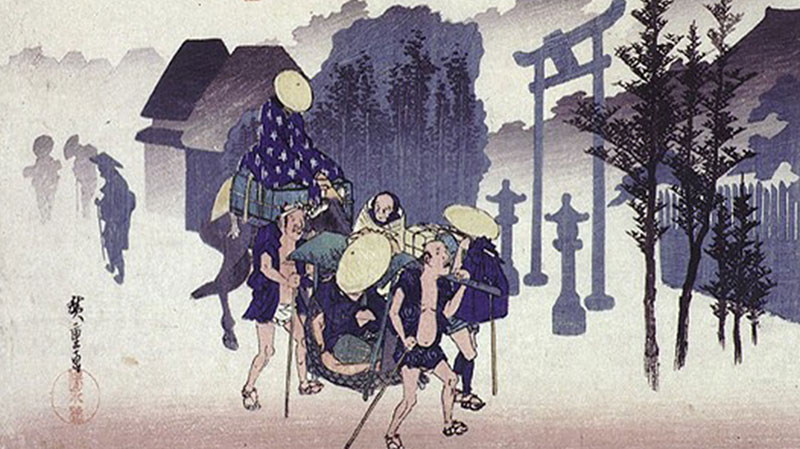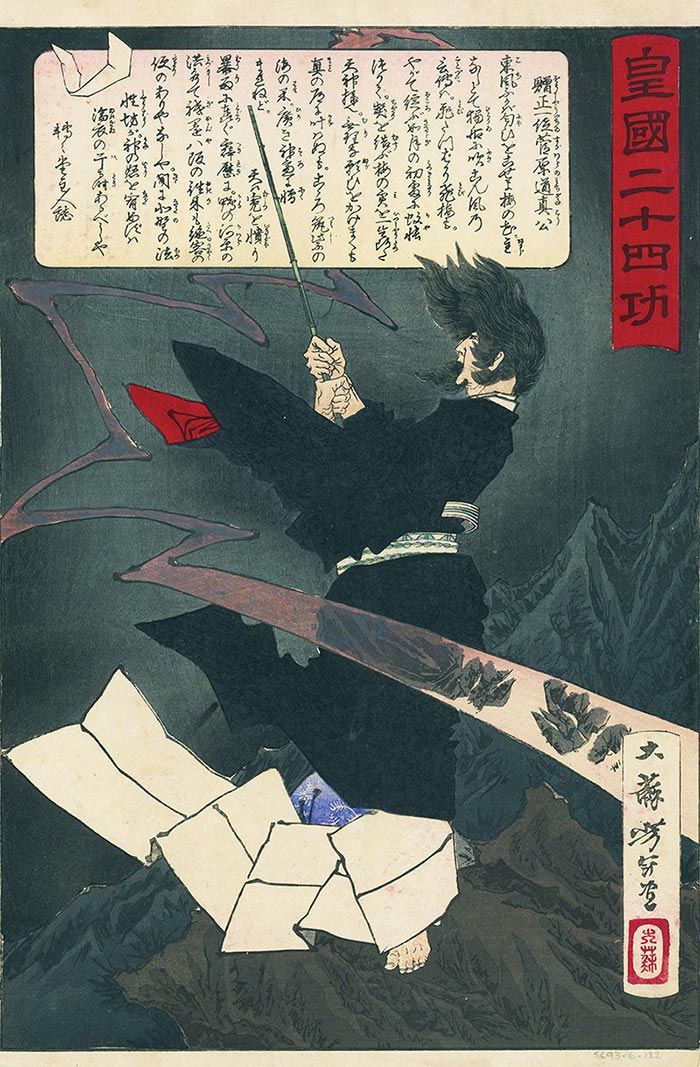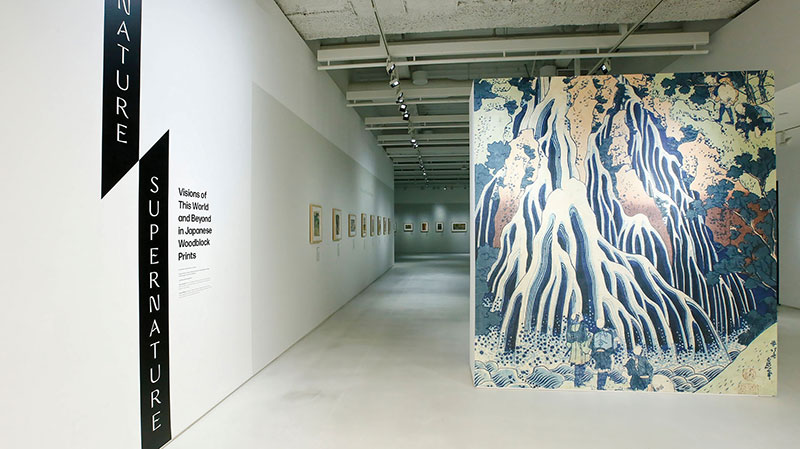
SUPERNATURE: Spiritual Forces in the Japanese Landscape

Mishima, No. 12 from the series Fifty-three Stations of the Tōkaidō by Utagawa Hiroshige, c. 1833-1834
The Japanese have long believed that spiritual or supernatural beings inhabit nature and have a profound impact on human life. There are two main groups of these beings – kami and yōkai – featured in this section of the exhibition. These two Japanese terms are difficult to translate as their usage and meaning have evolved over time and can be complex even in Japanese. However, they can be broadly summarized as follows:
Kami
Kami are spiritual beings believed to inhabit particular places and elements of nature, such as the sea, mountains, waterfalls or trees. They can also be the spirits of historic personages who have been granted this status. Kami are believed to control nature – providing protection, fine weather and bountiful harvests or storms, earthquakes and floods – depending on how they are treated. Respecting the kami by offering them food and drink and holding festivals in their honor ensures their support, while dishonor and neglect can invite calamity. Some kami are mentioned in Japan’s oldest written texts, and for centuries many have been worshipped in shrines (Japanese: jingū, jinja). They have occasionally been given human form in sculptures and paintings, but their presence is usually suggested by images of their animal messengers. In English they can be referred to as gods or deities – for example, Inari is the god of the rice harvest (with a fox messenger), while Tenjin is the god of scholarship and academic success.
Yōkai
Yōkai are supernatural beings closely associated with Japanese folklore and legends, and they are also thought to impact people’s lives in both positive and negative ways. The word yōkai means “mysterious apparitions,” and can encompass demons, monsters, shape-shifting animals and trickster spirits. In many folk tales and legends, unkind or careless human behavior towards other humans, animals and nature can lead to the appearance of wicked, destructive yōkai – like demons, angry ghosts and monsters – while kindness can result in their appeasement and even be rewarded by these creatures.
Seven Supernatural Stories from Japanese Folklore
Many of the prints in the SUPERNATURE section of this exhibition depict scenes from Japanese folk tales or legends that have long been well known to the Japanese. The stories contain a moral relating to consequences of human behavior, such as rewards for kindness or punishment for violence and greed, and the scene in the print typically represents the climax of the story. We have selected seven prints in the exhibition and have reworked the related tale to provide viewers with a better understanding of the meaning behind each image. (The prints are all from the collection of Scripps College, Claremont, CA.)
In Between
In this section of the exhibition, many of the spiritual beings fall into one of the two categories above, and some inhabit a space somewhere in between.

Sugawara no Michizane Evoking a Thunderstorm on Mount Tenpai by Tsukioka Yoshitoshi, 1881
Sugawara no Michizane (845-903) was a scholar, poet and politician who was widely respected for his scholarship and knowledge of Chinese language and literature. He rose to a high position in the Imperial court but became embroiled in court politics and was exiled to a minor government post in Kyushu, where he died. Shortly afterwards, the capital was ravaged by a plague and drought followed by rainstorms and flooding, and the Imperial palace was struck by lightning. The court attributed these disasters to Michizane’s angry spirit (Japanese: onryō), the subject of this print by Yoshitoshi. The emperor ordered the construction of the Kitano Tenman Shrine in Kyoto to honor Michizane and appease his spirit. Several decades later, Michizane was deified as the kami of sky and storms and given the title Tenjin-sama. In the Edo period, Tenjin became known as the kami of scholarship.
Related Programs
February
・Curator’s Talk | Nature/Supernature Exhibition
March
・Film Screening | A Letter to Momo
・Webinar Conversation | Yōkai Past and Present
April
・Webinar | Scenic Views and Supernatural Beings: New Themes in 19th-century Ukiyo-e Prints
May
・Webinar | Woodblock-printed and Real Journeys Through Japan
Explore More of the Exhibition
Main Exhibition Page

*Note: Japanese names in this exhibition are written in the traditional Japanese order, with the family name first and personal name last. However, if an artist has come to be known by a single name, (e.g., Hokusai and Kunisada) that name will be used for subsequent mentions.

